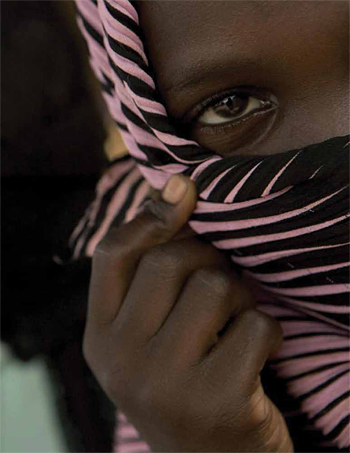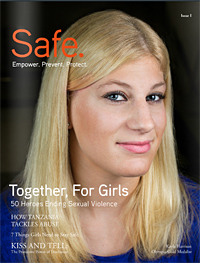You are here
CDC Measures Violence Against Children, Sparks Action
 Imagine that you woke up this morning and newspaper headlines said that scientists had discovered a new disease. The scientists reported that up to 1 billion children worldwide were exposed to this disease every year. And that over the course of their lifetimes children exposed to this disease were at greater risk for mental illnesses like depression and anxiety disorders; at greater risk for chronic diseases such as diabetes, heart disease, and cancer; at greater risk of infectious diseases like HIV; and, if that wasn’t enough, at greater risk for involvement in social problems such like crime and drug abuse. If we had such a disease, what do you think we’d do?
Imagine that you woke up this morning and newspaper headlines said that scientists had discovered a new disease. The scientists reported that up to 1 billion children worldwide were exposed to this disease every year. And that over the course of their lifetimes children exposed to this disease were at greater risk for mental illnesses like depression and anxiety disorders; at greater risk for chronic diseases such as diabetes, heart disease, and cancer; at greater risk of infectious diseases like HIV; and, if that wasn’t enough, at greater risk for involvement in social problems such like crime and drug abuse. If we had such a disease, what do you think we’d do?
The truth is we do have such a “disease;” it’s violence against children. One of the first things we would do is measure it and use those measurements to propel effective and sustainable action.
Right now the Centers for Disease Control and Prevention (CDC) is doing just that. CDC is providing technical assistance to countries throughout the world to measure violence against children and use this knowledge to spark action. To date CDC has assisted the governments of eight countries (Swaziland, Tanzania, Kenya, Zimbabwe, Haiti, Cambodia, Indonesia and Malawi) in completing national Violence Against Children Surveys (VACS) to understand the magnitude and nature of sexual, physical and emotional violence against children. These countries found that violence against children is unfortunately quite common. In the first five countries that conducted VACS, it was found that, as a child, from 26 to 38 percent of girls and from 9 to 21 percent of boys experienced sexual violence; 61 to 74 percent of girls and 57 to 76 percent of boys experienced physical violence; and 24 to 35 percent of girls and 27 to 39 percent of boys experienced emotional violence. These results ignite action. Countries have started multi-sector policy and programmatic responses to reduce and prevent violence against children, as a key strategy for achieving an AIDS-free generation, as well as for reducing other consequences of child abuse.
CDC does this work as part of a private-public partnership called Together for Girls that is dedicated to ending violence against children. Together for Girls addresses this egregious human rights violation and public health problem by bringing together the expertise and resources of many of the strongest organizations working globally in development, public health and children and women’s rights to collaborate with national governments and civil society.
 Today, Together for Girls released the first edition of Safe, a digital magazine that is focused on sexual violence and tells the stories of children exposed to violence all over the world. According to the Together for Girls Director Michele Moloney-Kitts, “This magazine helps to put a face on the issue of violence, especially sexual violence. We need to talk about this issue because it is all around us and yet is shrouded in silence. We are bringing these courageous stories to light, sharing solutions and resources for prevention and highlighting the heroes around the world who are making a difference, because we believe that violence is preventable and that survivors deserve our support.”
Today, Together for Girls released the first edition of Safe, a digital magazine that is focused on sexual violence and tells the stories of children exposed to violence all over the world. According to the Together for Girls Director Michele Moloney-Kitts, “This magazine helps to put a face on the issue of violence, especially sexual violence. We need to talk about this issue because it is all around us and yet is shrouded in silence. We are bringing these courageous stories to light, sharing solutions and resources for prevention and highlighting the heroes around the world who are making a difference, because we believe that violence is preventable and that survivors deserve our support.”
The data from the VACS and these stories paint a deeply disturbing picture of the cruelties that children suffer the world over, sometimes at the hands of parents, relatives, neighbors, teachers, friends and dating partners. Violence occurs in their homes, in schools, and in the streets, and the contexts for this violence range from war to schools to dating to parenting. All of these events have the potential to have deep and lasting impacts on the health and well-being of children over their entire lifetimes.
Violence against the most vulnerable members of our society, our children, has a tremendous negative impact on a wide range of health and social problems. We have a powerful opportunity—and a responsibility—to prevent violence, protect children and have an impact on a broad range of health and social challenges facing low- and high-income countries alike.
Progress in understanding and preventing violence against children is advancing rapidly. We have it in our power to replace the violence children experience with safe, stable and nurturing environments in which children can thrive. There is every reason to believe that our understanding and capacity to prevent such violence will make a difference. The lessons learned by the public health community so far in preventing violence are consistent with the lessons from the community’s much longer experience with the prevention of infectious and chronic diseases. Violence against children can be prevented if the global community starts now, acts wisely and works together.
Learn more about CDC’s role with Together for Girls.
The Together for Girls partnership includes five UN agencies (led by UNICEF with UNAIDS, UN Women, WHO and UNFPA); the U.S. government (CDC’s Division of Violence Prevention, the President’s Emergency Plan for AIDS Relief and its partners, USAID and the Department of State’s Office of Global Women's Issues); and the private sector (Grupo ABC, Becton, Dickinson and Company [BD], the CDC Foundation and the Nduna Foundation).
Photos: Top Right: © UNICEF/Haviv; Blog slide: © UNICEF/DeCesare